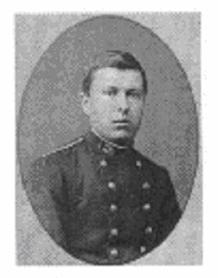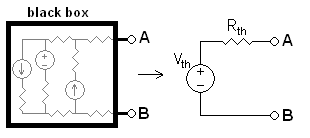Thevenin's Theorem
- states that it is possible to simplify any linear circuit, no matter how complex, to an equivalent circuit with just a single voltage source and series resistance connected to a load.
-The theorem was independently derived in 1853 by the German scientist Hermann von Helmholtz and in 1883 by Léon Charles Thévenin (1857–1926), an electrical engineer with France's national Postes et Télégraphes telecommunications organization.

Hermann von Helmholtz

Léon Charles Thévenin
Thevenin Equivalent Circuit:

Case 1: Only Independent Sources
-the typical case. In the typical case, there are no dependent sources in the circuit to be Thevenized. To find the Thevenin equivalent, first find the open circuit voltage, Voc, this is the Thevenin voltage. To find the Thevenin resistance, set all sources to zero and find the resistance of the resulting circuit.
Consider again the circuit from above,

and try to find the Thevenin circuit at the terminals (i.e., across the 1k resistor). From the discussion of superposition, we know the open circuit voltage, Voc, is 1.666 volts. The Thevenin resistance, RT, is found by finding the equivalent resistance of the circuit with all source set to zero, as shown below



Obviously the Thevenin resistance, RT, is 1k||500=333Ω. Therefore the resulting circuit is:

Watch Another Example using Thevenin's Theorem!
Reflection:
I have learned that Thevenin's Theorem makes a complex circuit problem into a simpler one. According to our Professor, it is commonly used especially in Board Examinations for ECE/EE.



Mag-post ng isang Komento